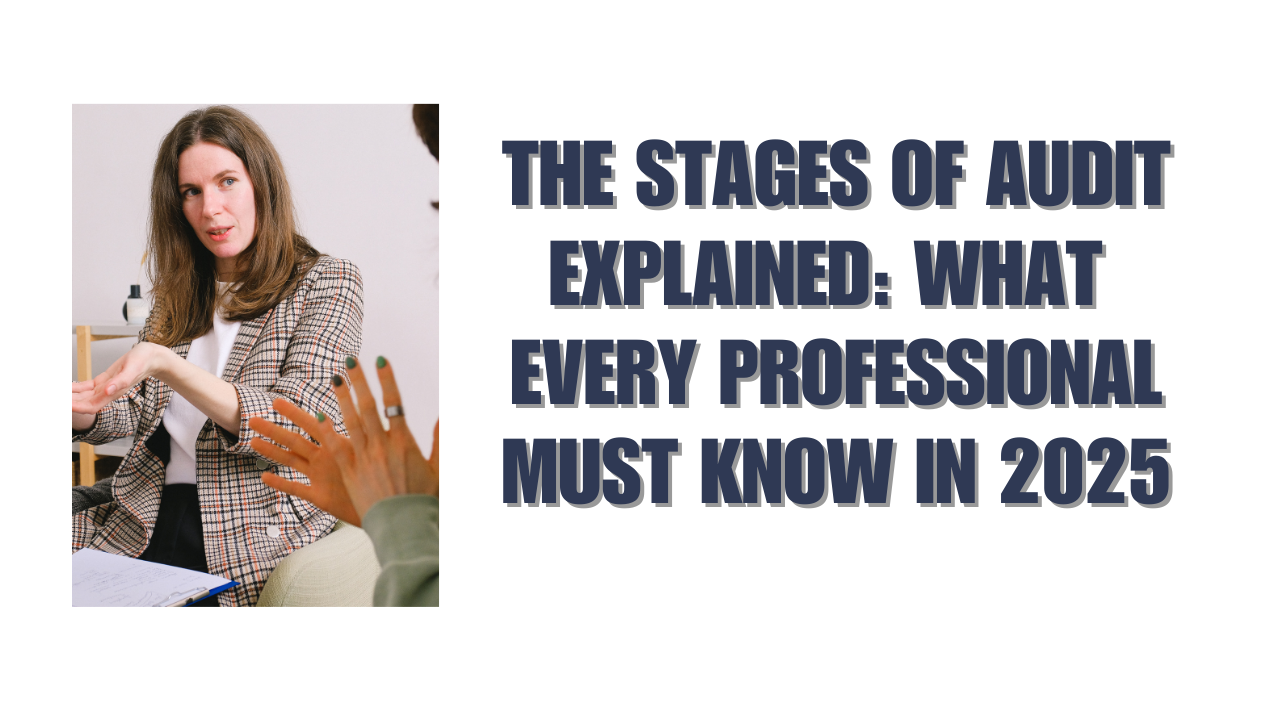Most business professionals find auditing overwhelming at first. But knowing how to handle each audit stage helps maintain financial integrity and operational excellence. Of course, audits play a vital role in business by adding credibility to financial information and making corporate entities more accountable.
Auditors follow a systematic approach based on generally accepted auditing standards that ensures consistency and reliability. This piece breaks down the 5 stages of audit process and shows how each phase leads to success. On top of that, you’ll discover the stages of internal audit – an explicit ISO 27001 requirement under Clause 9.2 that states: “The organization shall conduct internal audits at planned intervals”. Critical processes need more frequent audits to ensure they work as intended.
What you’ll learn:
- A step-by-step guide to plan audits from start to finish
- Ways to review internal controls that get results
- Quick steps to assess risks thoroughly
- Smart strategies for reporting and follow-up work
Stage 1: Planning the Audit
A solid plan lays the foundation for every successful audit. The right planning helps auditors focus on the core areas and makes sure we have enough resources, which ended up reducing audit risk. This first stage maps out everything we’ll do during the audit.
Defining audit objectives and scope
The audit objectives express what we want to accomplish. For assurance engagements, objectives should reflect what we found in early risk assessments and think over the chances of major errors, fraud, and noncompliance. The scope draws clear lines around what we will and won’t look at during the audit. It spells out which processes, locations, and time periods we’ll review to line up with our set objectives.
Understanding the business environment
We need a detailed picture of the company and its surroundings before we start testing. This has:
- The client’s legal structure, ownership, and governance
- Industry context, regulatory factors, and external influences
- The business model, objectives, and strategies
- Internal control systems and financial reporting frameworks
This knowledge gives us context to make professional judgments throughout the audit. Our understanding of the business also helps us customize audit procedures for each client.
Identifying key stakeholders
The core team we work with usually includes the audit committee, board, CEO, and CFO. Other key players might be business unit leaders, external auditors, regulators, and investors. Getting everyone involved early helps match their expectations with our audit goals. Face-to-face meetings are a great way to get deeper insights than email – we can build relationships and read body language better.
Creating the audit plan and timeline
The audit plan details exactly how we’ll carry out our audit strategy. It should spell out the nature, timing, and scope of our planned risk assessment procedures and additional audit steps at the assertion level. A well-laid-out timeline sets deadlines for each audit phase. The plan must stay flexible enough to adapt as the audit moves forward.
Plans change as the audit progresses – we need to keep updating them throughout the engagement.
Stage 2: Reviewing Internal Controls
The second significant stage of the audit process focuses on reviewing internal controls. This phase helps determine the reliability of an organization’s financial information and its compliance with applicable laws and regulations.
What are internal controls?
Internal controls consist of policies, procedures, and processes that protect company assets, ensure data accuracy, promote accountability, and improve operational efficiency. The Committee of Sponsoring Organizations of the Treadway Commission (COSO) framework highlights five key components:
- Control environment: Sets the tone regarding the importance of ethical behavior
- Risk assessment: Identifies threats to business objectives
- Control activities: Implements policies to alleviate identified risks
- Information and communication: Captures and shares relevant information
- Monitoring: Regularly reviews control effectiveness
Evaluating control design and implementation
My role requires assessing whether controls are appropriately designed and properly implemented. Design assessment determines if controls can effectively prevent or detect material misstatements. Implementation testing confirms the existence and usage of these controls. Questions alone won’t suffice—the process needs observation, inspection, or reperformance. Walk-through testing provides the quickest way to evaluate smaller entities with less formal controls by following transactions from start to finish through financial records.
Common control weaknesses
A clear understanding of typical control deficiencies reveals potential vulnerabilities. Common weaknesses include:
- Inadequate segregation of duties (one person handling multiple sensitive functions)
- Poor recordkeeping and documentation
- Insufficient access controls for sensitive systems
- Ineffective reconciliation processes
- Lack of regular monitoring and review
Tools used for control testing
Several techniques help assess control effectiveness:
Questions to management reveal implementation details. Direct observation shows control procedures in action. Document inspection provides evidence of compliance. Re-performance validates control functionality. Complex systems benefit from computer-aided audit tools that analyze large data sets. These tools move beyond traditional sample-based testing toward continuous monitoring platforms.
Stage 3: Conducting Risk Assessment and Testing
The third stage of the audit process looks at risk assessment and testing after we assess internal controls. This stage helps us spot where material misstatements will likely show up.
Identifying high-risk areas
The audit process depends heavily on risk assessment because we can’t look at every transaction. My team focuses audit work on areas where transaction and balance errors could create material misstatements. ISA 315 points out that the biggest risks often connect to fraud, complex transactions, related parties, subjective measurements, or unusual transactions outside normal business operations. Most Chief Audit Executives see cybersecurity as their top concern, with 83% listing it as a leading risk. AI and digital disruption are becoming bigger concerns faster.
Audit sampling techniques
Audit sampling lets us look at a portion of items in an account balance or transaction class to get a full picture of the entire population. We use two main approaches:
- Statistical sampling: Random selection methods give us mathematically based conclusions we can apply to the whole population
- Non-statistical sampling: The auditor’s judgment guides selection, but findings apply only to the sample
Substantive testing vs. control testing
These methods work together but serve different purposes:
Control testing looks at how well internal controls work to catch or stop material misstatements. We usually do this before substantive testing, and it helps decide how much substantive testing we need.
Substantive testing checks financial statement accuracy by looking at transactions, account balances, and disclosures. This gives us direct proof about whether financial information is complete and accurate. The core team needs to understand the company’s environment, check for risks, and customize procedures based on what we find.
Documenting audit evidence
Good documentation backs up our conclusions, makes review easier, and shows who’s responsible. When we gather evidence, we need to find the right sources, match date ranges with audit scope, and keep everything secure. Quality evidence makes our audit more credible and helps stakeholders trust our findings.
Stage 4: Reporting and Follow-Up
The reporting phase brings together all previous audit work and turns findings into practical insights. This fourth stage of the audit process needs technical precision and clear communication skills.
Drafting the audit report
A good audit report must be accurate, objective, clear, concise, constructive, complete, and timely. The report structure should include the audit title, objectives, scope, background information, observations with criticality ratings, recommendations, and management action plans. The findings need to be arranged by importance and backed up with relevant examples or data. Each assertion should follow a logical structure that shows condition, criteria, cause, and effect/risk before suggesting recommendations.
Communicating findings to management
Clear communication builds trust between departments and encourages accountability. Meeting face-to-face lets you read body language and connect with stakeholders better. Draft findings should reach stakeholders well before formal reports, and critical issues need immediate verbal discussion. Visual tools like dashboards and infographics help boost clarity. This prevents situations where 90% of audit hours focus on testing but stakeholders only remember how you shared the results.
Creating an action plan
After audit findings, we work with management to create Corrective Action Plans (CAPs) that follow the SMART framework: Specific, Measurable, Achievable, Risk-based, and Time-bound. Each plan lists who’s responsible, what resources they need, planned milestones, completion dates, and how to track status. Action plans should fix root causes instead of just symptoms. Final reports with management responses should be ready within 30 days after fieldwork ends.
Re-audit and continuous improvement
Re-auditing helps assess and maintain improvements. We use the same methods to select samples, collect data, and analyze results to make valid comparisons with previous findings. This creates a continuous cycle until we reach desired standards. Combined with stakeholder support and awareness, this approach leads to lasting quality improvements. Running the re-audit cycle three times gives the best results for training purposes.
Conclusion
A deep grasp of the stages of audit gives professionals the knowledge they need to maintain financial integrity. Each phase plays a vital role in creating a detailed audit process that produces reliable results and practical insights.
Careful planning kicks off the process. Teams set clear goals and create a roadmap that guides the entire audit. A review of internal controls reveals if the organization has proper safeguards. The third stage focuses on risk assessment and testing to spot high-risk areas that need attention. Clear communication and well-laid-out action plans help turn findings into real improvements during the final reporting and follow-up phase.
Audits need careful attention to detail. The process becomes manageable and works better when you break it down into these four stages. Methodical auditors who follow this approach provide valuable insights and help organizations build stronger financial governance.
New technologies and regulations reshape the audit scene constantly. Audit professionals must stay up-to-date with best practices as we move toward 2025 and beyond. Your steadfast dedication to learning and applying these audit stages will without doubt boost organizational success and financial transparency.
FAQs
Q1. What are the main stages of an audit process?
An audit typically consists of four main stages: planning, reviewing internal controls, conducting risk assessment and testing, and reporting and follow-up. Each stage plays a crucial role in ensuring a comprehensive and effective audit.
Q2. How is risk assessment conducted during an audit?
Risk assessment involves identifying high-risk areas where material misstatements are most likely to occur. Auditors use various techniques, including statistical and non-statistical sampling, to evaluate these risks and direct their focus accordingly.
Q3. What’s the difference between substantive testing and control testing?
Control testing evaluates the effectiveness of internal controls in preventing or detecting misstatements, while substantive testing directly verifies the accuracy of financial statements by examining transactions, account balances, and disclosures.
Q4. How should audit findings be communicated to management?
Audit findings should be communicated clearly and concisely, preferably through face-to-face meetings. It’s important to prioritize findings by significance, support them with relevant data, and discuss critical issues immediately.
Q5. What happens after the audit report is delivered?
After the audit report is delivered, management develops Corrective Action Plans (CAPs) to address the findings. This is followed by a re-audit process to assess improvements and ensure continuous enhancement of the organization’s financial governance.






